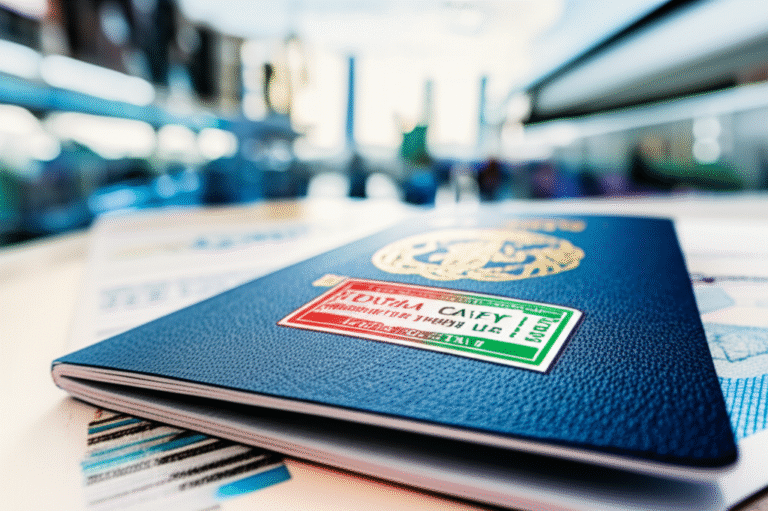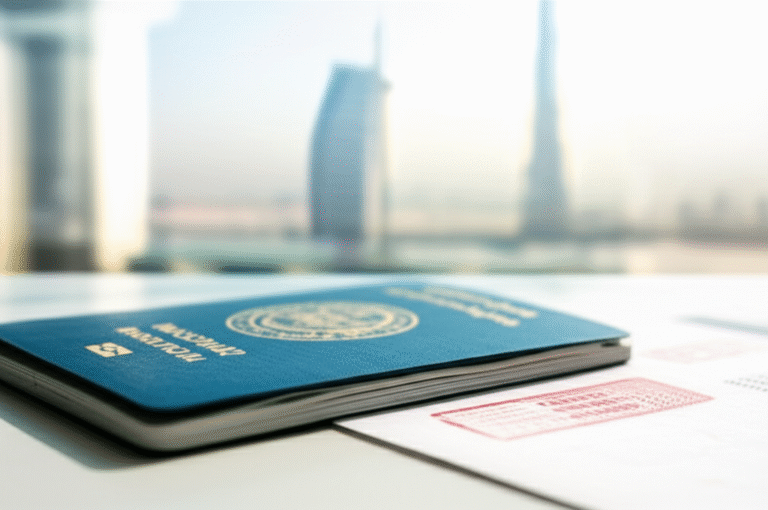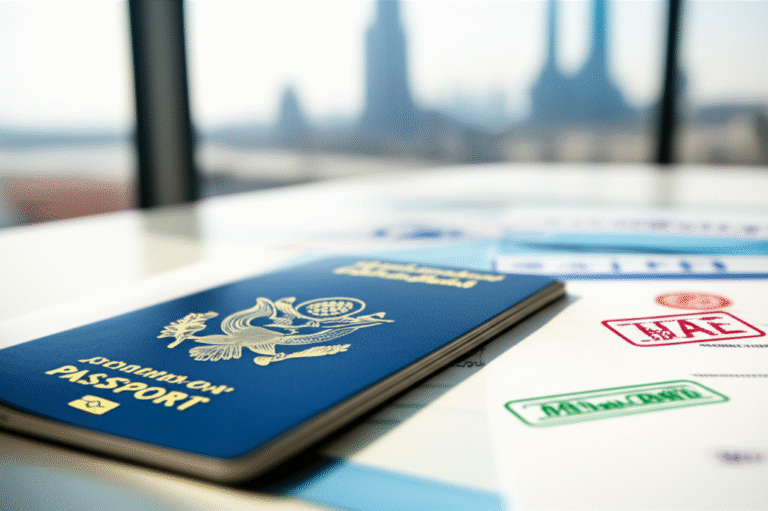How Long Does It Take to Get OCI?
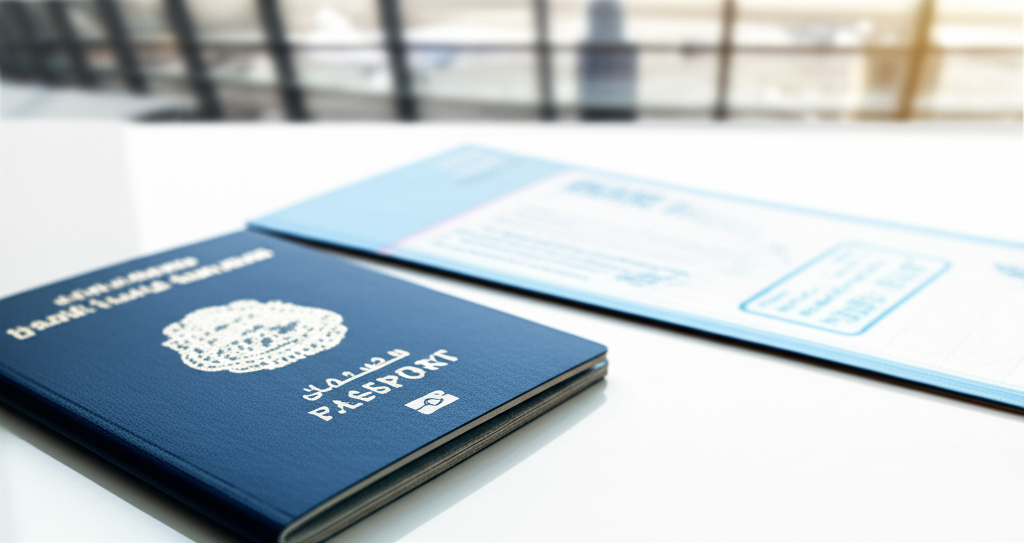
The typical processing time for an OCI card can range from 4 to 12 weeks, but this can vary significantly based on your application location, the completeness of your documents, and any additional verification required by the Indian Embassy or Consulate.
Key Takeaways
- OCI processing typically takes 4-12 weeks.
- Application location impacts processing timelines.
- Complete documentation ensures faster OCI approval.
- Consular verification can extend OCI application time.
- Stay updated on OCI status for prompt action.
- OCI card issuance is a crucial step for Indian diaspora.
Applying for an Overseas Citizen of India (OCI) card is an exciting step for many as it opens doors to deeper connections with India. You might be wondering, “How long does it take to get OCI?” This is a common question, and the answer isn’t always a simple number. Processing times can feel like a bit of a mystery, with factors influencing the timeline that aren’t always immediately clear. But fear not! We’re here to break down the OCI application process and give you a realistic understanding of what to expect. By the end of this guide, you’ll have a much clearer picture of the journey from application to receiving your OCI card.
Understanding OCI and Its Importance
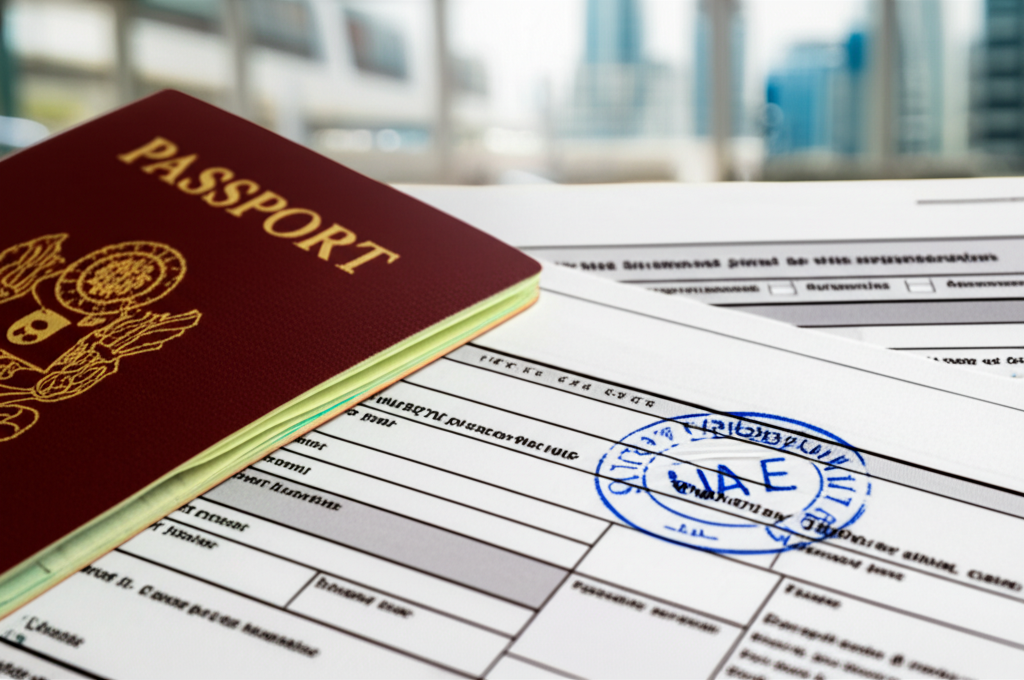
The Overseas Citizen of India (OCI) scheme is a unique form of residency that allows individuals of Indian origin to live and work in India indefinitely. It’s important to distinguish that OCI is not dual citizenship, but rather a set of benefits that confer many of the advantages of Indian citizenship. Introduced in 2005, the OCI card aims to strengthen the connection between the Indian diaspora and their ancestral homeland. Holders of OCI cards are granted lifelong visas to enter and stay in India for any length of time, exemption from police reporting, and parity with Non-Resident Indians (NRIs) in economic, financial, and educational fields.
For residents in Dubai and the UAE, understanding the OCI process is crucial for maintaining strong ties with India. Whether you’re planning extended visits, seeking business opportunities, or simply wishing to connect with your heritage, the OCI card is an invaluable document. The application process, managed by the High Commission of India and its consulates, is designed to be thorough, ensuring all applicants meet the eligibility criteria. This thoroughness, while ensuring integrity, is also a primary factor influencing “how long does it take to get OCI.”
Factors Influencing OCI Processing Time
The journey to obtaining your OCI card is influenced by several key factors that can cause the processing time to fluctuate. Understanding these elements can help you manage expectations and prepare accordingly. In Dubai, as in other global cities, the process is streamlined but still subject to these variables.
1. Application Location and Jurisdiction
Where you submit your OCI application plays a significant role. Different consulates and embassies worldwide have varying workloads and internal processing efficiencies. The Consulate General of India in Dubai, for instance, manages a large volume of applications from residents in the UAE. Their specific operational capacity and staff availability directly impact how swiftly your application moves through the system.
Generally, applications submitted in countries with a high Indian diaspora population might experience slightly longer wait times due to higher volumes. Conversely, smaller jurisdictions might process applications faster. It’s always advisable to check the official website of the Indian Mission (Embassy or CGI) responsible for your region for the most accurate and up-to-date processing estimates. For those in the UAE, the Consulate General of India, Dubai is your primary point of contact.
2. Completeness and Accuracy of Documentation
This is arguably the most critical factor you can control. Any missing documents, incorrect information, or improperly formatted uploads can lead to significant delays. Your OCI application is meticulously reviewed, and if discrepancies are found, it will be sent back for correction, effectively restarting or pausing the timeline. Common issues include:
- Incorrectly scanned documents.
- Photos that do not meet specific OCI guidelines.
- Incomplete application forms.
- Lack of supporting evidence for eligibility.
- Mismatch in names or dates across different identity documents.
Ensure you meticulously review all requirements for your specific category of OCI application and double-check every document before submission. This foresight can save you weeks of waiting.
3. Verification Processes
The Indian government conducts thorough background checks and verifications for all OCI applications. This can include:
- Document Verification: Cross-referencing the details provided with original documents and, if necessary, with issuing authorities.
- Identity Verification: Ensuring the applicant’s identity is consistent with their application and supporting documents.
- Background Checks: For certain applicants or specific circumstances, additional background checks might be initiated.
These verification steps are essential for national security and to maintain the integrity of the OCI scheme. While usually completed within the standard timeframe, complex cases or situations requiring further scrutiny can extend the processing duration.
4. Type of OCI Application
The specific OCI category you are applying under can also influence processing times. For example:
- New OCI Card Applications: These follow the standard process.
- OCI Miscellaneous Services: Such as re-issuance of OCI for a new passport, change of particulars, or loss/damage of the OCI card. These often have slightly different processing timelines and may sometimes be expedited.
- OCI for Minors: Applications for children may require additional documentation and verification steps.
Always refer to the specific guidelines for your OCI application type on the official Indian Mission’s website.
5. Government Holidays and Peak Seasons
Like any government service, OCI processing can be affected by public holidays in India and at the specific Indian Mission abroad. Additionally, during peak travel seasons or specific periods when many people plan to apply (e.g., before major Indian festivals), the volume of applications can increase, potentially leading to slightly longer waits.
The OCI Application Process: A Step-by-Step Timeline
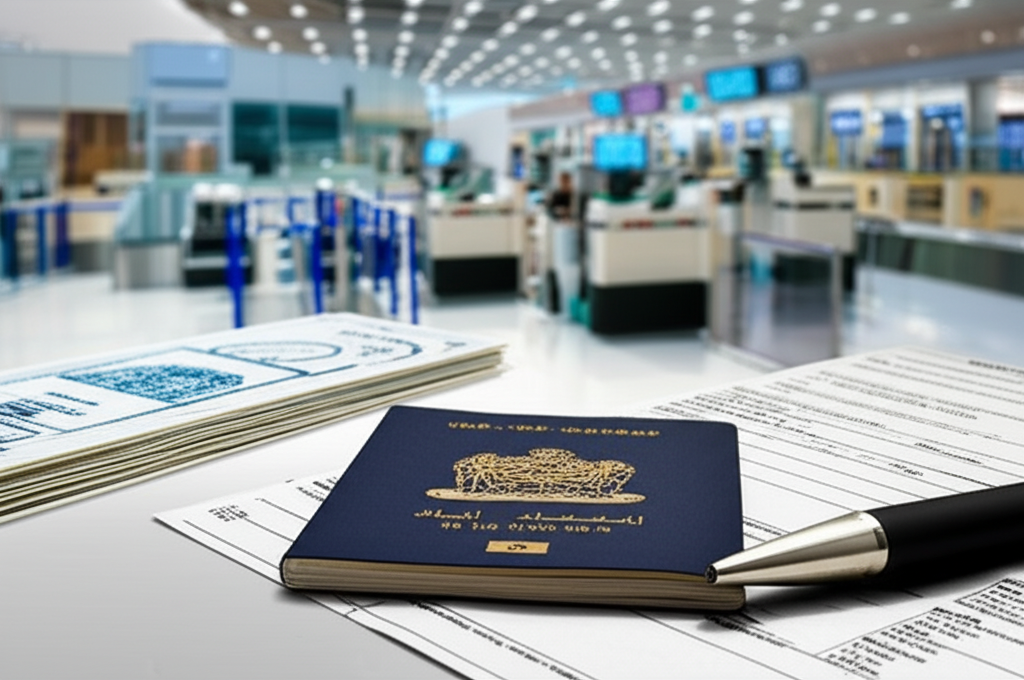
To understand how long it takes to get OCI, it’s helpful to walk through the typical stages of the application process. Each step contributes to the overall timeline, and any bottleneck can extend the duration.
Step 1: Online Application Submission
The process begins with filling out the OCI application form online on the official government portal (https://ociservices.gov.in/). You will need to upload scanned copies of your supporting documents and a digital photograph. This stage is immediate, but the quality of your submission here sets the tone for everything that follows.
Estimated Time: Instantaneous upon submission.
Step 2: Appointment Scheduling and Document Submission at Consulate
After online submission, you will need to book an appointment at the designated OCI application center or the Consulate General of India. You’ll be required to submit your original documents along with the printed application form and photocopies.
Estimated Time: Varies greatly. Appointment availability can range from a few days to several weeks, depending on the location and demand.
Step 3: Application Review and Verification
Once submitted, your application and documents are reviewed by the consulate. This is where the primary verification processes begin. They check for completeness, accuracy, and eligibility.
Estimated Time: This is a core part of the processing time, typically taking several weeks.
Step 4: Decision and Approval
If your application is approved, it moves towards the final stages. If there are any issues, you might be asked for additional information or clarification, which will add to the timeline.
Estimated Time: Integrated within the overall processing duration.
Step 5: OCI Card Printing and Dispatch
Upon final approval, your OCI card is printed and prepared for collection or dispatch. This involves the physical printing of the card with your details and photograph.
Estimated Time: Usually a few days to a week after approval.
Step 6: Collection of OCI Card
You will be notified when your OCI card is ready for collection. You will need to visit the consulate or application center again, often bringing your passport for endorsement or verification.
Estimated Time: Dependent on notification and your availability to collect.
Considering all these steps, the entire process from initial online submission to collecting your OCI card typically falls within the 4 to 12-week window. However, remember that this is an estimate, and individual experiences can vary widely.
OCI Processing Time at the Consulate General of India, Dubai
The Consulate General of India (CGI) in Dubai handles a substantial number of OCI applications from the Indian diaspora residing in the Emirate. While they strive for efficiency, the sheer volume means processing times can be a factor for many applicants. Based on general observations and official guidelines, here’s a more specific look at the timelines you might expect in Dubai:
Standard OCI Application Processing Time (Dubai):
The generally accepted timeframe for a new OCI card application at CGI Dubai is approximately 6 to 8 weeks. This is the most common estimate provided by the consulate and by applicants who have recently gone through the process. However, this is a guideline, not a guarantee.
Factors specific to Dubai:
- High Volume: Dubai has one of the largest Indian expat populations globally, leading to a consistently high number of OCI applications.
- Appointment System: Access to appointments can sometimes be challenging due to demand. Planning your application well in advance of any travel plans is crucial.
- Document Verification: The consulate ensures all documents are authentic and correctly issued by UAE authorities where applicable (e.g., birth certificates, marriage certificates).
OCI Miscellaneous Services in Dubai:
For services like OCI re-issuance (e.g., for a new passport), change of particulars, or replacement of lost/damaged cards, the processing time can differ. These are sometimes processed slightly faster, often within 2 to 4 weeks, but this can also vary. Again, completeness of documentation is paramount.
How to Stay Updated:
The CGI Dubai website often provides updates on processing times for various services. It is also possible to track your application status online through the OCI services portal. Staying informed about your application’s progress can help you anticipate the next steps and address any potential issues promptly.
OCI Card vs. Visa: What’s the Difference?
It’s important to clarify the distinction between an OCI card and a traditional visa, as they serve different purposes and have different implications for travel to India.
| Feature | OCI Card | Visa (e.g., Tourist, Business) |
|---|---|---|
| Purpose | Lifelong visa-free entry and stay in India for persons of Indian origin. Grants many rights of Indian citizens. | Temporary permission to enter and stay in India for a specific purpose (tourism, business, study, etc.) and for a limited duration. |
| Validity | Lifelong (though requires re-issuance on obtaining a new passport after age 20, and once after age 50). | Fixed duration (e.g., 6 months, 1 year), with specific entry/stay limits. |
| Eligibility | Persons of Indian origin, spouse of foreign nationality of Indian origin or OCI cardholder (under certain conditions). | Available to most foreign nationals for various purposes, subject to nationality and purpose of visit. |
| Issuance Authority | Indian High Commission/Consulate abroad. | Indian Embassies/Consulates abroad, or Indian e-Visa system. |
| Processing Time | 4-12 weeks (standard for new applications). | Can range from a few days (e.g., e-Visa) to several weeks for regular visas. |
| Rights in India | Exemption from police registration, parity with NRIs in economic/financial/educational fields, access to jobs, etc. (cannot vote, hold constitutional posts). | Limited to the specific purpose and duration granted by the visa. |
Understanding this difference is key. If you qualify for an OCI card based on your Indian heritage, the application process, though longer, offers far greater long-term benefits and flexibility for visiting and staying in India compared to multiple visa applications.
OCI Miscellaneous Services: Timelines for Updates
Sometimes, an OCI card needs updating. This falls under “OCI Miscellaneous Services” and covers situations like getting a new passport, changing your name, or replacing a lost card. Knowing the typical timelines for these services is also important.
Re-issuance of OCI Card with New Passport
OCI rules have been updated regarding re-issuance. Currently:
- For OCI cardholders who obtained their OCI card before the age of 20: The OCI card needs to be re-issued once when a new passport is issued after completing 20 years of age.
- For OCI cardholders who obtained their OCI card after the age of 20: The OCI card needs to be re-issued once when a new passport is issued after completing 50 years of age.
The application for re-issuance involves submitting your old OCI card, new passport, and relevant documents. The processing time for these miscellaneous services is generally shorter than for a fresh application, often ranging from 2 to 4 weeks.
Change of Particulars (Name, Address, etc.)
If you need to update personal details on your OCI card, you will apply for a miscellaneous service. Similar to re-issuance, this typically takes around 2 to 4 weeks.
Replacement of Lost or Damaged OCI Card
Applying for a replacement OCI card due to loss or damage also falls under miscellaneous services. The process requires a police report (for lost cards) and thorough documentation. The estimated time is also within the 2 to 4-week range.
Pro Tip: Always keep your OCI card and passport details updated as per the latest guidelines. Missing these updates can lead to issues when traveling. For any changes, ensure you have official documentation like a new passport, a gazette notification for name changes, or a marriage certificate.
Tips for Expediting Your OCI Application (Within the System)
While you can’t directly speed up the consulate’s internal processes, you can significantly influence the efficiency of your own application and avoid common pitfalls that cause delays. Here are some tips:
- Read Instructions Meticulously: Before you even start filling the form, read all instructions on the official OCI portal and the CGI Dubai website. Understand each document requirement for your specific case.
- Prepare All Documents in Advance: Gather all necessary original documents and their photocopies. Ensure they are clear, legible, and meet the specified format (e.g., size, file type for uploads).
- Use High-Quality Scans/Photos: For online uploads, ensure images are clear, well-lit, and properly cropped. Poor quality scans are a common reason for rejection or delays. For photographs, strictly adhere to the specifications (size, background, expression).
- Fill the Application Accurately: Double-check every detail on the application form. Ensure names, dates, and other information match exactly across all documents. Any discrepancy will trigger a review and potential delay.
- Book Your Appointment Strategically: If possible, book your appointment as soon as you have your documents in order. Avoid booking too far in advance if your documents aren’t ready, as some documents have expiry dates.
- Be Prompt with Queries: If the consulate requests additional information or clarification, respond as quickly as possible. Delays in your response will directly impact the processing time.
- Track Your Application Online: Regularly check the status of your OCI application on the official portal. This allows you to see if there are any updates or issues flagged.
Remember, “expediting” in this context means ensuring your application is flawless from the start, allowing it to move through the standard process without unnecessary hold-ups. There is no official “expedited processing fee” or service that guarantees faster results for standard applications.
When to Apply: Planning Your OCI Application
Given that the OCI process can take several weeks, careful planning is essential, especially if you have upcoming travel plans to India. Here’s a guide to help you decide when to apply:
- For Urgent Travel: If you have an urgent need to travel to India and do not qualify for an emergency visa or have a valid visa, applying for OCI might not be the best immediate solution. The processing time is simply too long for last-minute needs.
- For Non-Urgent Travel or Regular Visits: If you plan to visit India regularly for personal, family, or business reasons, and you are eligible, start the OCI application process at least 3-4 months before your intended travel date. This buffer accounts for potential delays and allows for a stress-free experience.
- When Your Current Visa is Expiring: If you are in India on a long-term visa and your eligibility for OCI is confirmed, it is wise to begin the OCI application process while still in India, or immediately upon returning to your country of residence.
- During School Holidays or Downtime: If you have free time during school breaks or a period of less work activity, this can be an ideal time to focus on gathering documents and submitting your application.
- Well in Advance of Major Life Events: If you anticipate needing OCI for future events like the education of your children in India, starting a business, or long-term family visits, begin the process early.
It’s always better to start the process sooner rather than later. The OCI card, once issued, simplifies all future travel to India significantly.
Frequently Asked Questions (FAQ) about OCI Processing Times
Here are answers to some common questions about how long it takes to get an OCI card:
Q1: What is the average processing time for a new OCI card application?
A1: The average processing time for a new OCI card application typically ranges from 4 to 12 weeks from the date of submission of your application at the consulate.
Q2: Can OCI processing be faster than 4 weeks?
A2: While unusual, it might be faster in very specific, low-volume jurisdictions or for certain expedited miscellaneous services. However, for standard new applications, 4 weeks is the absolute minimum and rarely achieved. It’s best to expect the standard 6-12 week timeframe.
Q3: What happens if my OCI application is delayed?
A3: If your application is delayed beyond the typical timeframe, it usually indicates that further verification is required, or there might be an issue with your documentation. You can check your application status online and, if concerned, contact the Indian Mission where you applied.
Q4: Does applying for OCI Miscellaneous Services take less time?
A4: Yes, OCI Miscellaneous Services (like re-issuance for a new passport or change of particulars) generally have a shorter processing time, often taking between 2 to 4 weeks.
Q5: How can I track the status of my OCI application?
A5: You can track your OCI application status online through the official OCI services portal (https://ociservices.gov.in/eservice) by entering your file reference number and passport details.
Q6: Are there any ways to officially expedite the OCI application process?
A6: Generally, there is no official “expedited” processing for standard OCI applications. The best way to ensure a smooth and timely process is to submit a complete and accurate application from the start. You may contact the consulate for specific urgent cases, but approval is discretionary.
Q7: Does the OCI card come with an expiry date?
A7: The OCI card itself confers lifelong residency status. However, it needs to be re-issued once when a new passport is issued after the age of 20, and again when a new passport is issued after the age of 50. The card is valid, but the accompanying passport must be current.
Conclusion
Navigating the process of obtaining an Overseas Citizen of India (OCI) card can seem daunting, especially when you’re asking, “How long does it take to get OCI?” As we’ve explored, the answer is not a single number but a range, typically between 4 to 12 weeks for new applications. This timeframe is influenced by crucial factors like your application location, the accuracy and completeness of your documentation, and the necessary verification procedures undertaken by the Indian authorities.
While the Consulate General of India in Dubai, like other missions, operates with its own set of volumes and efficiencies, the core advice remains universal: meticulous preparation is key. By ensuring all your documents are in order, your application is filled out accurately, and you’ve followed all guidelines precisely, you significantly increase the chances of your OCI application proceeding smoothly through the system without undue delays. Staying informed, checking your application status regularly, and planning well in advance of any travel needs will transform this potentially stressful process into a manageable one.
The OCI card represents a profound connection to India, offering convenience and a sense of belonging. Understanding the timeline involved is the first step towards securing this valuable status. With patience and diligent adherence to the process, you’ll soon be ready to experience the many benefits of being an Overseas Citizen of India.

